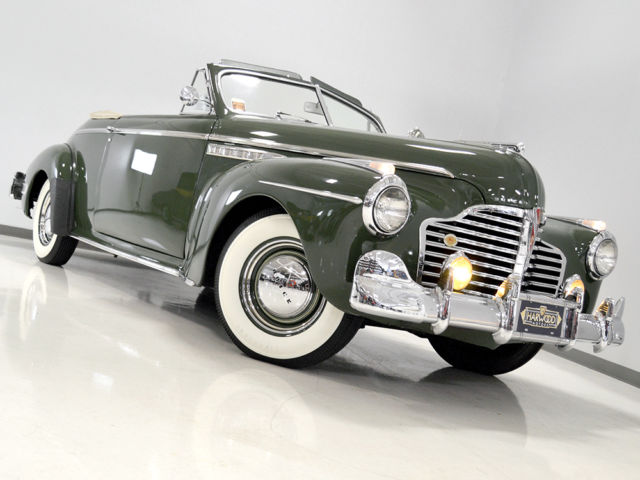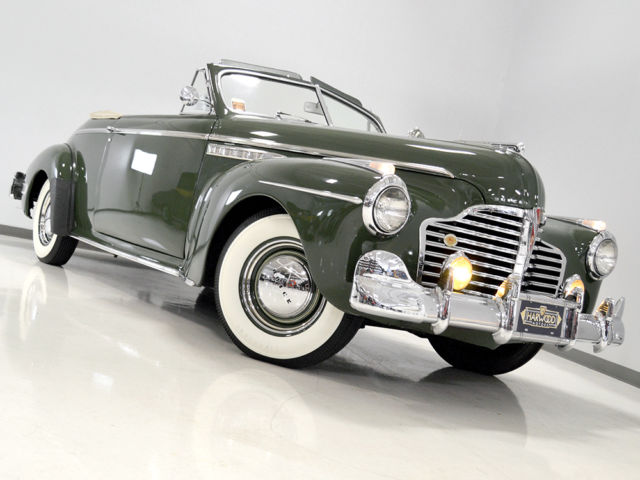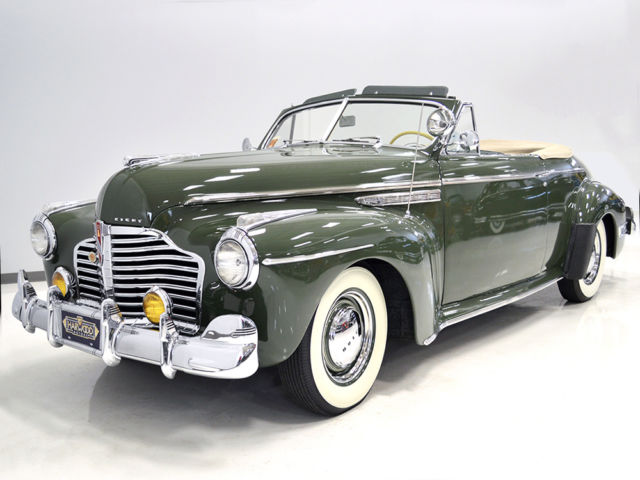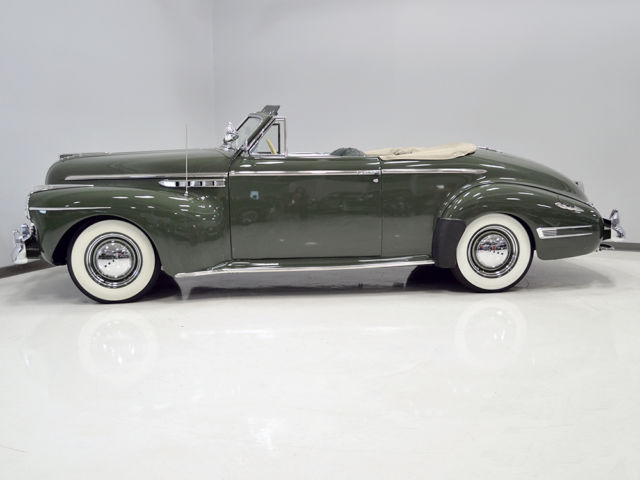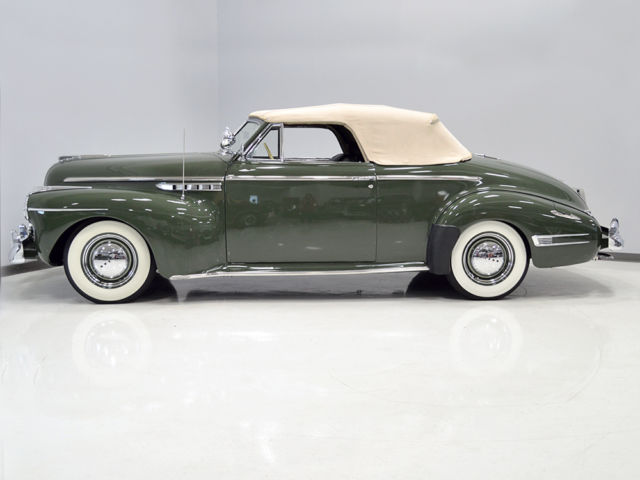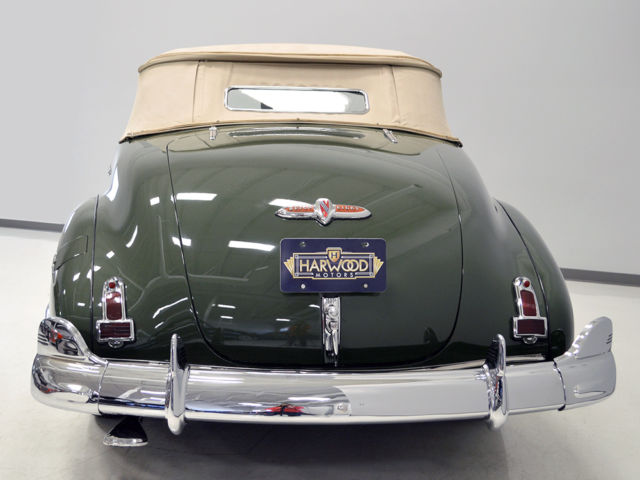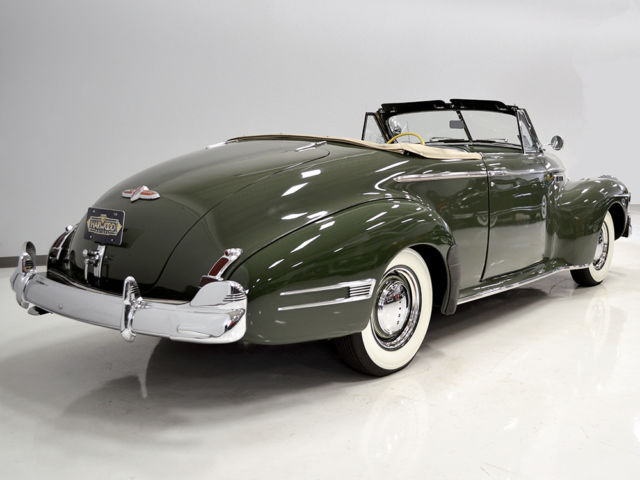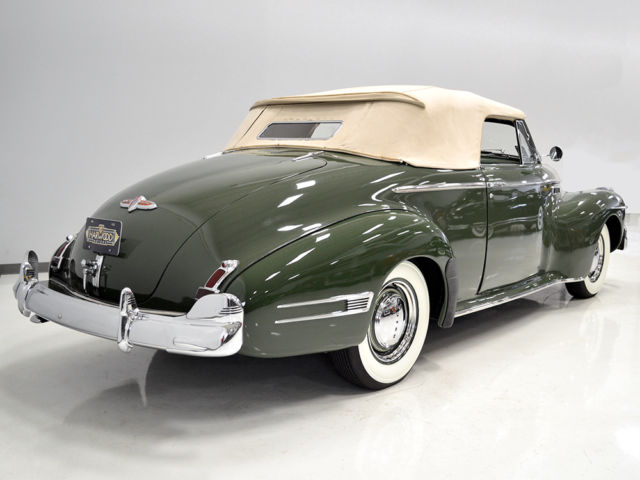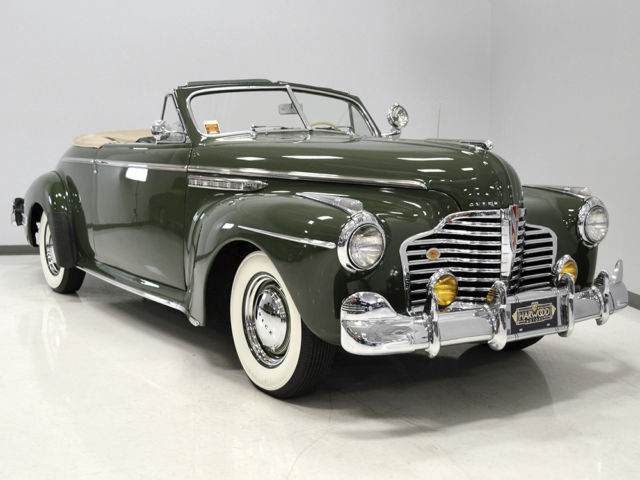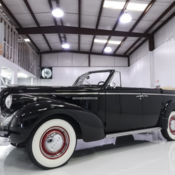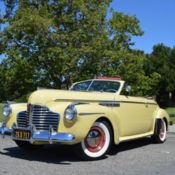AACA National First Prize Winner, great driver, beautiful car.
1941 Buick 56C Super Convertible Coupe
There were no bad cars in 1941. It was one of those pinnacle years where everything came together just right and all the automakers were hitting on all eight cylinders. There was a confluence of activity that made that happen: One, by 1938, the effects of the Great Depression were lessening, allowing designers to be a little more "joyous" in their designs. More chrome, more flamboyance, more style. People were ready for it. Two, technology was advancing at an ever-increasing rate. The cars of 1941 are not even remotely similar to those of 1931, and I would argue that the 1930s brought more changes to the automobile than any other single decade. And finally, war was on the horizon. Nobody knew the future, but they did know that any car purchased in 1941 was likely going to be the last car a lot of people bought for a considerable amount of time. It's certainly possible that the engineers, designers, and even the guys on the assembly line put a little extra into their efforts with that in the backs of their minds.
Which brings us to this wonderful 1941 Buick Super convertible coupe. Beautifully styled, brimming with state-of-the-art technology, and as reliable as anything you can buy today, it's a special car. Those of you who know me personally know that 1941 Buicks are my particular favorites, as my father drove a 1941 Buick Super business coupe daily for much of my childhood. Today, I own two of them, a Century and a Limited limousine. And I will tell you honestly, right now, that if I could find a way to keep this car for myself, I would do it without hesitation. It's that good.
The car was sold new in eastern Pennsylvania—you can still find the original dealer's service card in the glove box (Scranton Buick). We don't know much of its early history, but it eventually ended up out in Arizona where it received a frame-off restoration and subsequently won its AACA National First Prize award in 2007. It has been restored in its original color combination of English Green with a green leather interior and tan top, all of which is verified by the trim tag on the cowl. The restoration was quite nicely done, and while it is no longer perfect and in show condition, it's just about ideal for touring and showing at the local level. The paint is extremely well done and holding up well and I'd be hard pressed to name any flaws off the top of my head. There's some minor wear on the nose where the hood meets the grille, which is typical on these cars, and maybe a nick or two from driving, but overall it presents extremely well. The doors were carefully assembled to the body so they close and latch without a big slam and the unique side-opening hood does not need a lot of wrestling to get it open or closed. There's a deep shine to the finish that looks entirely appropriate, and there's no metallic in it to distract from the correct 1940s look. And while you may not have previously considered a green car, this one is just gorgeous from any angle. You won't find many that are prettier.
The chrome was all restored at the same time as the rest of the car and remains in very good to excellent condition. Most of Buick's trim in 1941 was made of "pot metal" which tends to degrade and pit over the years, but the ornamentation on this Super remains crisp and sharp, suggesting good base stock to begin with. The grille is now showing some very minor pits returning, which is probably inevitable, but they are only visible upon very close inspection, but the rest is in first-rate shape. The hood ornament is crisp, the lovely little Buick shields above the headlights are highly detailed, and the SUPER lettering on the hood pulls still has sharp edges. This was not a cut-rate chrome job. As the photos show, the bumpers are unmarked and the stainless side trim has been buffed to a chrome-like shine. It's also worth noting that this car is loaded with accessories, including a set of GM-logo fog lamps (functional), a driver's side spotlight (also functional), and a full set of bumper ends, also known as "elephant ears," which are very difficult to find and probably worth $1500 all by themselves.
The beautifully tailored green leather interior is pretty much as it would have been when the car was new. The hides on the front seat might be a little more supple than what they were doing in 1941, but I don't think anyone will complain about the seats being TOO comfortable. All Buicks received those wonderful engine-turned panels for the instruments and glove box lid, and they were obviously restored with the correct pattern and finish. All the plastics were likewise restored, including the big ivory steering wheel. The gauges themselves are probably original and showing some deterioration, most notably the ammeter, but they all work except the speedometer which we're investigating. Replacements are commonly available and not expensive, and if you're concerned, I may even have an NOS ammeter in my own collection of parts that I would let you have with the car. The radio and clock, as expected, are not functioning, but all the lights, turn signals, horn, and other features are working as intended. Seat belts were added for safety and I'm betting nobody has ever sat in the back seat, which looks like new. There's a tan canvas convertible top that folds easily and shows some minor signs of age, but if you're using this car correctly, you'll only need it for emergencies and it will otherwise live under the matching tan boot. Buicks also came with rather massive trunks, with this Super offering correct fabric upholstery, a full-sized spare tire assembly, and a complete tool set with jack.
Buick's overhead valve straight-8 engines reached the pinnacle of development in 1941 as well, with the Super offering a 248 cubic inch version that's as smooth as an electric motor. Experts will note that this car does not have the Compound Carburetion that was standard equipment on Supers in 1941, and it was likely removed during WWII to help save on fuel (there's a gas rationing sticker still on the windshield). We considered returning it to dual carburetor configuration, but this car runs and drives so well that we're disinclined to take it apart and make major changes. It starts instantly, idles so smoothly and silently that you have to look at the oil pressure gauge to be sure it's running, and the dual carbs only add 10 horsepower, so it would be unlikely to make a difference you could actually feel in the real world. I have most of a dual carburetor setup for this car and if you would like it installed at extra cost, I am happy to discuss it.
Dante Red engine paint was another neat touch by the designers to make it look special, and the bright engine glows inside the engine compartment. It's properly detailed with "Fireball" decals on the valve covers, an accessory oil filter, and a proper cloth wiring harness. There are signs of having been driven and enjoyed since its award-winning days, but there's no shame in that and it's really only a weekend of detailing away from being ready to show again. The manifolds are not cracked or damaged, so it whispers at idle and in the driving we've done in the car, it has never once acted up or shown signs of getting hot. It's a no-vices old car that just works the way it should.
The three-speed manual transmission was rebuilt during the restoration and has tight throws that reflect careful attention to getting the linkage just right. There's no slop in the shifter and it drops into each gear with a well-oiled feeling. There's plenty of power on tap around town and it pulls to 50-55 MPH easily and it'll cruise there all day without issues. There are 4.11 gears in back, which was standard on the Special and Super models, and it makes the small engine feel energetic around town and allows you to just loaf around in high gear, minimizing shifting. The suspension was also rebuilt, and the shocks are supple, the exhaust system is hushed, and the brakes are quite effective despite being manual drums. Correct 16-inch wheels were just finished with correct cream-colored pinstripes, trim rings, and Buick hubcaps for a dressed-up look. 6.50-16 Firestone wide whites look great, but as is the case with bias-ply tires, they tend to wander on rutted pavement—a set of wide whitewall radials would make this a spectacular road car that could tour anywhere, any time.
I obviously love this car. It gets everything right and it's just beautiful to look at and a joy to drive. You can nit-pick it (don't expect me to listen to you, however; I already know all the faults and I don't care—that's how nice it is), but the truth is that 1941 Super convertible coupes are among the most desirable pre-war Buicks of all. Add in the excellent mechanicals and unusual color combination and you get a car that stops traffic everywhere it goes and will always be something you look forward to driving. In short, it will do all the things we want our hobby cars to do. Like the folks in 1941, you may not get another chance to own a car like this, so don't hesitate, call today!
- Condition: Used
- Make: Buick
- Model: 56C Super Convertible Coupe
- Type: Convertible
- Year: 1941
- Mileage: 3,964
- VIN: 14192189
- Color: English Green
- Engine size: 248 cubic inch straight-8
- Number of cylinders: 8
- Transmission: 3-speed manual
- Interior color: Green Leather
- Vehicle Title: Clear Want to buy? Contact seller!
